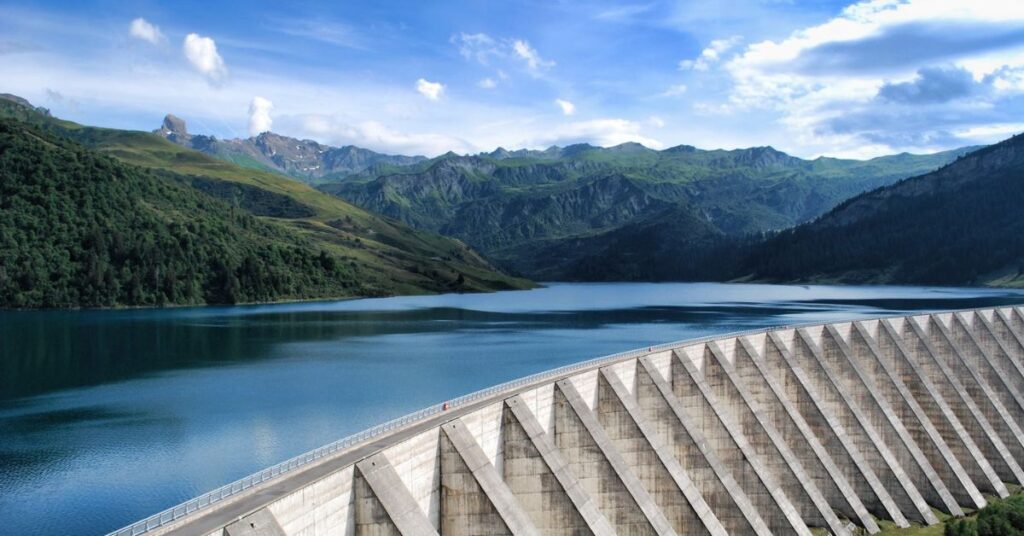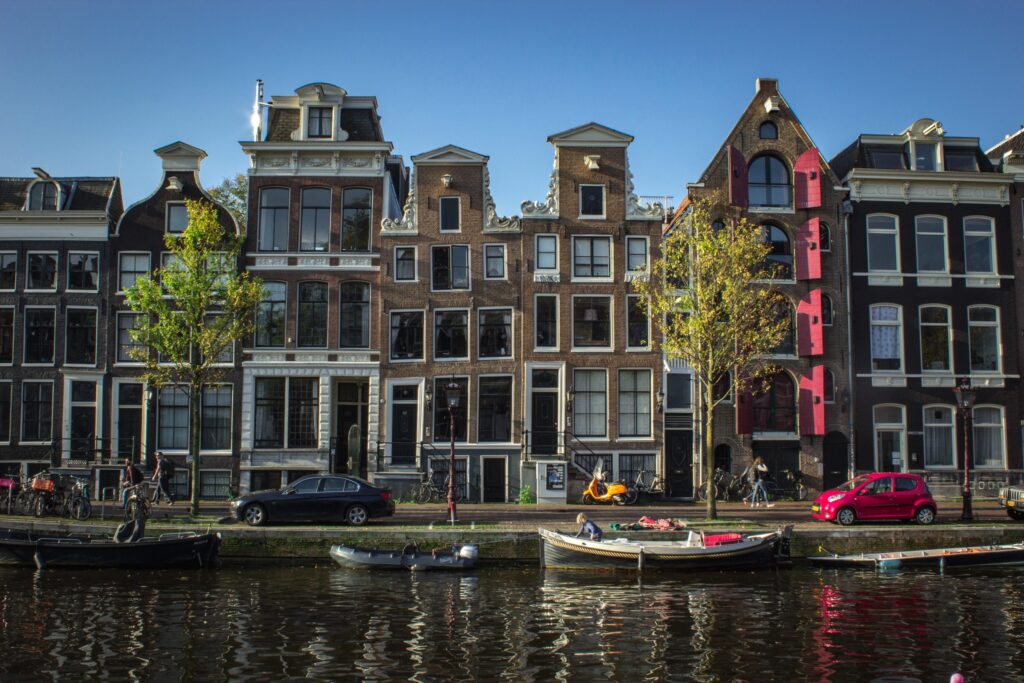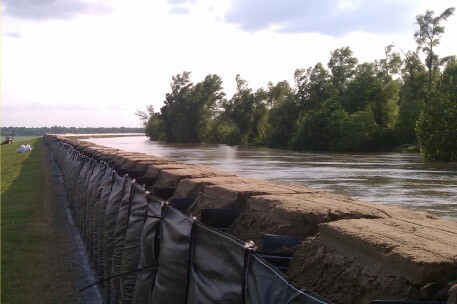What Is the Difference Between Dikes and Dams?
Learn the difference between dikes and dams, how wall dams work, and how TrapBag barriers provide fast, effective flood control for any project.

Managing water effectively has always been vital to protecting communities and infrastructure. Two of the most common flood control structures used for this purpose are dikes and dams, each serving distinct roles in flood control systems around the world.
This guide explains how dikes and dams differ, how they work, and how modern alternatives like TrapBag® barriers can support or replace traditional methods for fast, effective water management.
What Is a Dam?
A dam is a structure built across a river or waterway to hold back water and control its flow. Most are made of concrete or earth and form a reservoir behind them.
By blocking water, dams can store water for irrigation, control floods, and generate hydroelectric power. In short, a dam manages how much water moves downstream—and when.
Primary Purposes of Dams
- Water storage: Creating reservoirs for drinking water, agriculture, or industrial use.
- Flood control: Holding back excess water during storms and releasing it gradually.
- Hydroelectric generation: Converting water flow into renewable energy.
- Recreation: Forming artificial lakes used for boating or fishing.
While some massive structures like the Hoover Dam or Three Gorges Dam are permanent landmarks, smaller “wall dam” systems can also be built to temporarily divert or contain water during construction or emergency flood control operations.
How Dams Are Built
Permanent dams are large engineering projects. They require:
- A solid foundation capable of withstanding high pressure.
- A concrete or earthen structure built layer by layer.
- A spillway system to safely release excess water when reservoirs fill.
Temporary or small-scale wall dams may use modular materials or engineered barriers, allowing for quick setup in locations where permanent construction isn’t feasible.

What Is a Dike?
A dike (sometimes spelled “dyke”) is an embankment or wall built alongside a river, lake, or coastline to prevent water from flowing into low-lying areas. Unlike dams, which cut across a water source, dikes run parallel to it.
Primary Purposes of Dikes
- Flood prevention: Holding back rising water during heavy rainfall or storm surges.
- Land reclamation: Allowing communities to live and farm in areas that would otherwise be underwater.
- Shoreline protection: Reducing coastal erosion and wave impact.
Dikes can be permanent structures made from soil, rock, concrete, or temporary systems like TrapBag barriers that can be quickly deployed and filled to create a stable embankment.
How Dikes Are Built
Permanent dikes typically use locally available materials compacted into an embankment, reinforced with concrete or geotextiles for stability. Their height and slope depend on water levels and wave energy.
For rapid response or temporary flood prevention, modular barriers such as TrapBags can form an effective dike line in a fraction of the time it takes to build traditional earthworks.

The Key Differences Between Dikes and Dams
| Feature | Dike | Dam |
|---|---|---|
| Orientation | Runs parallel to a body of water | Built perpendicular across a waterway |
| Purpose | Keeps water away from land | Holds or stores water in a reservoir |
| Location | Along coastlines, rivers, or lowlands | Across rivers or valleys |
| Material | Soil, rock, concrete, or modular barriers | Concrete, rockfill, or compacted earth |
| Function in Flood Control | Prevents water from entering an area | Regulates water flow and level |
| Example | Netherlands dike system | Hoover Dam (USA), Three Gorges Dam (China) |
In short, dikes protect land from water, while dams control water itself.
How Dikes and Dams Prevent Flooding
Both structures are vital to modern flood control systems:
- Dikes act as continuous barriers, blocking encroaching water from reaching vulnerable land.
- Dams slow and manage the release of water to reduce downstream flooding.
Together, they form a complementary system of flood control techniques that help communities prepare for rising water events.
TrapBag Barriers for Dikes and Dams
When time is limited or permanent construction isn’t practical, TrapBag barriers provide an effective alternative for temporary dikes, wall dams, and flood diversions.
Each TrapBag barrier is sloped on one side and vertical on the other, with 60% of its mass concentrated in the lower half—a design that prevents tipping and provides exceptional stability. They can be filled with sand, gravel, or small rocks using heavy machinery to create miles of protection in a matter of hours.
TrapBags have been used to:
- Form emergency dikes along rivers or coastlines
- Build temporary wall dam structures at construction sites
- Contain floodwaters around infrastructure
- Reinforce levees and embankments
- Control water flow for spill containment or erosion prevention
Whether used as part of a long-term flood mitigation plan or as a rapid response measure, TrapBags deliver scalable, high-performance flood control measures trusted by municipalities, military units, and contractors worldwide.

Get a Quote on TrapBag Flood Barriers
TrapBag barriers are a proven tool for dike and dam construction, offering dependable protection when floods threaten communities or worksites. Contact the TrapBag team today for a free quote or to discuss how our cellular barrier systems can support your next flood control project.
Get the Dirt Before the Flood Hits
Stay ahead of flooding, erosion, and disaster response challenges. The Dirt, TrapBag’s monthly newsletter, delivers field-tested tips, real-world case studies, and the latest in barrier technology straight to your inbox.
